This drawing depicts a position where the formation of ice became important.
Click on image for full size
Windows Original
The position of Saturn when gas changed to ice
The position of the planets in the solar nebula greatly affected their 1. size and 2. composition. This is because of the effect of how cold it was in the nebula.
1. The nebula was a lot warmer close to the proto-sun. The blue line shown in the picture shows the point at which the temperature became cold enough for gases to become ice. At this point and further out, the materials that forming planets (proto-planets) began to extract from the cloud were ice, as well as rocky material and gas molecules. Retention of ice resulted in these proto-planets becoming giant, massive planets. (The same thing happens to raindrops when it becomes cold enough for the raindrops to become slushy snow drops, the drops are more massive). Planets which formed closer to the proto-sun were smaller, and more rocky.
You might also be interested in:
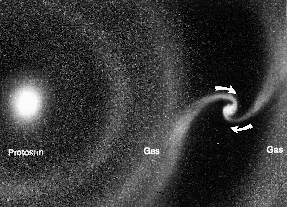
As shown in this picture, while they were forming in the solar nebula, the nucleii of the planets-to-be (called protoplanets) drew material to themselves from the cloud of gas and dust around them. The
...more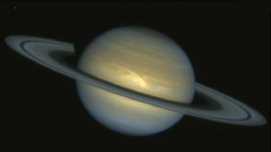
The most important motions in the atmosphere are winds. The major winds in Saturn's atmosphere are the zonal winds which are made of zones and belts. Zones are high pressure systems and belts are low pressure
...more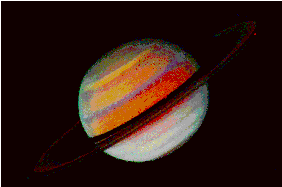
The striped cloud bands on Saturn, like Jupiter, are divided into belts and zones. In a belt, the wind flows very strongly in one direction only. In a zone, the wind flows very strongly in exactly the
...more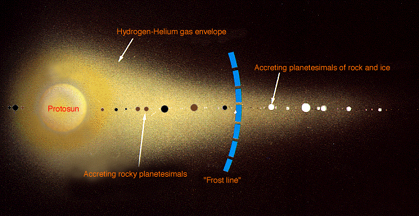
The position of the planets in the solar nebula greatly affected their 1. size and 2. composition. This is because of the effect of how cold it was in the nebula. 1. The nebula was a lot warmer close to
...more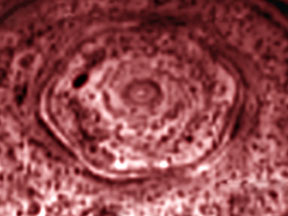
Astronomers have discovered a strange shape in Saturn's atmosphere. The shape is a hexagon. The hexagon is near Saturn's North Pole. Scientists aren't quite sure why Saturn has the hexagon shape in its
...more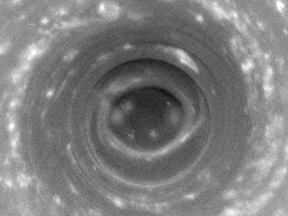
Saturn's South Pole is very stormy. It is also surprisingly warm. A huge, hurricane-like storm is centered on the South Pole. Astronomers recently discovered that the pole is also warmer than any other
...more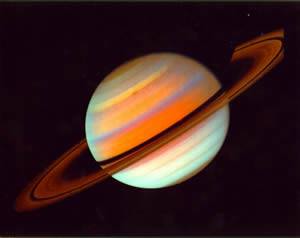
Like the inner planets and Jupiter, Saturn is clearly visible in the night sky. The ancient Greeks named the planet after the god of agriculture and time. It wasn't until 1655, however, that we knew Saturn
...more














